Historical Sew Fortnightly: Challenge #3: Under it All
This post is for the Dreamstress' Historical Sew Fortnightly Challenge #3: Under it All. I'm actually on time for this one! I am finding all of these challenges very inspiring. I work better with deadlines and people to hold me accountable. And the many gorgeous historical garments being posted in the Facebook photo album are incredible...I feel humbled by them, and am keenly aware of my amateur sewing abilities now. There is always room to grow, right?
My project for this challenge is a set of stays. I had considered making an early set of stays circa 1790, but in the end, I was inspired by the Kyoto Brassier, an early 1800's transition undergarment.
I draped and drafted the pattern myself, looking at this page from KCI. The stay fill out better on my squishy body than they do on my stiff dress form.
I'm told by Sabine of Kleidung um 1800 that from her research in the Lady's Strategem, there is very little (if any) extent evidence of what we call "short stays." It is hard to say, but the Kyoto Brassier might have been used for someone with health problems, or someone who is pregnant or nursing. I am none of these, but the garment was fun to make anyway.
It is actually very comfortable to wear...more so than a modern bra. I've been wearing it for a couple of hours now, and I feel like I could do anything in it. They are easy to put on, without any help. Who knows...maybe these were a working woman's stays???
(original way of wearing the straps)
(my modified version)
I found that modifying the way the straps tie in the back actually works better for my body shape. The original stays used a string tying together the top shoulder strap to the bottom side strap directly under it, but when worn like this, the straps fall off my shoulders too easily. But, if I cross the top shoulder strap to the bottom side strap on the opposite side, they fit much better, give me a better shape, and stay on.
I used linen for the lining, cotton for the outer fabric, and sandwiched between is a layer of cotton duck to give it a bit of body and stiffness. They are hand sewn. I'm not sure what the original was boned with, but I used reed...simply because it is what I had on hand.
Just the Facts:
The Challenge: Under it All: Kyoto Brassier
Fabric: Linen Lining, Cotton outer fabric, Cotton duck interlining.
Pattern: Drafted and Draped by me.
Year: Early 1800's
Notions: Thread, Embroidery Floss(for eyelets), 1/4" tape, 1/2" tape, Reed Boning.
How historically accurate is it? They are based off an extant piece, and hand sewn, so I think that makes them pretty historically accurate...with the exception of how I modified the ties in the back. As far as what to call them...half stays, short stays, transitional stays, brassier...I'm not sure what the historically accurate term is.
Hours to complete: Why do I hate this part. I get so lost in my sewing hours...time means nothing to me when I'm working on a project. My guess...8 hours(hand sewn)???
First worn: Today, for a few hours...very comfortable!
Total cost: Reed boning and other notions from my stash? Cotton and Linen, about $15-$20.
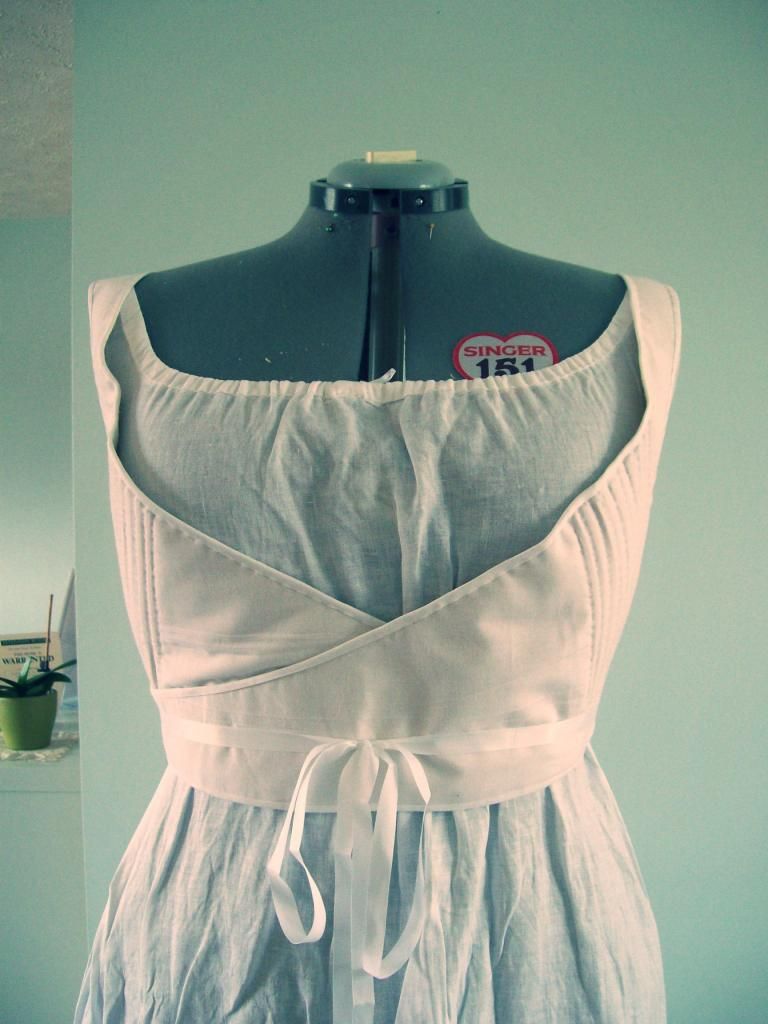
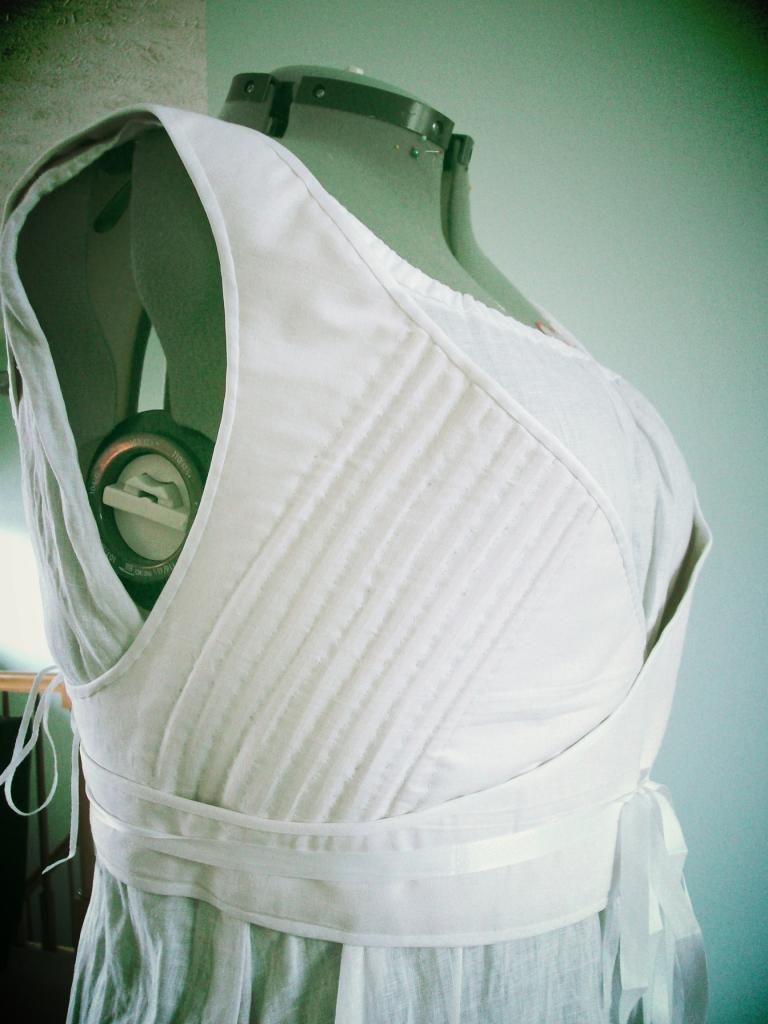

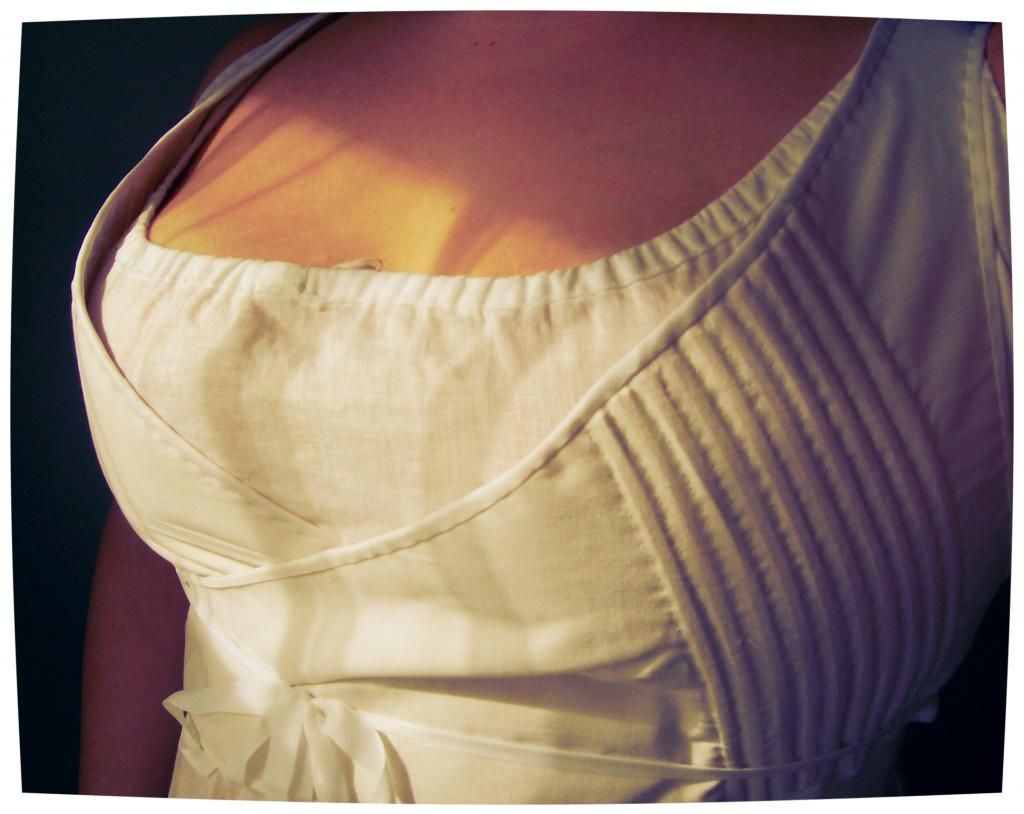
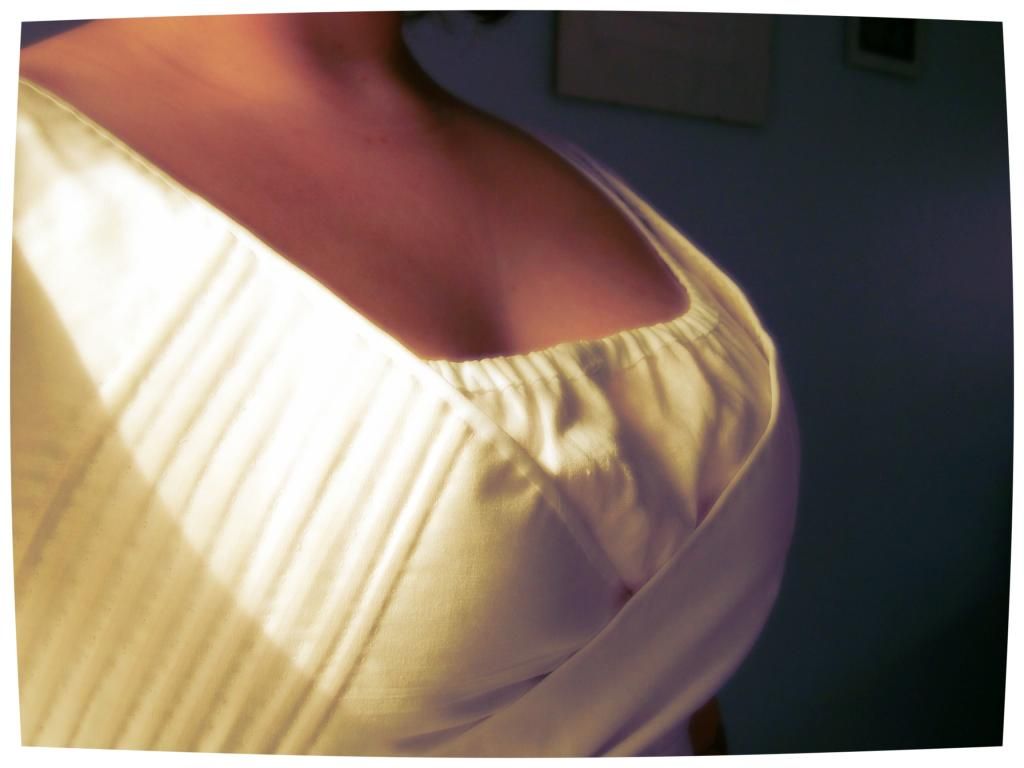

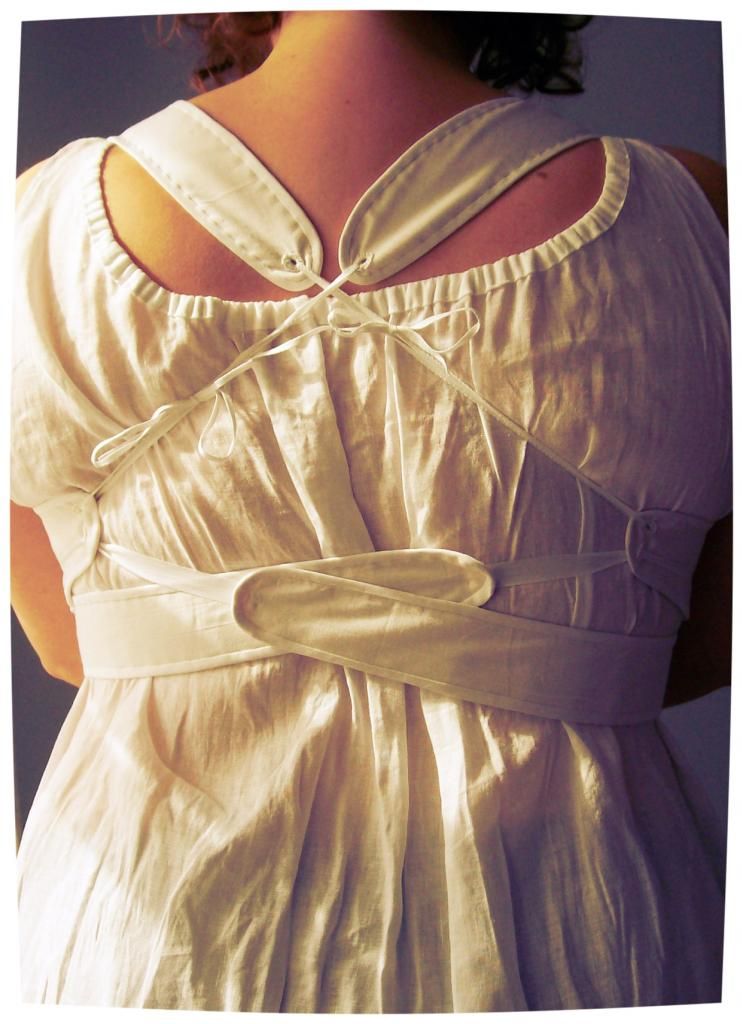
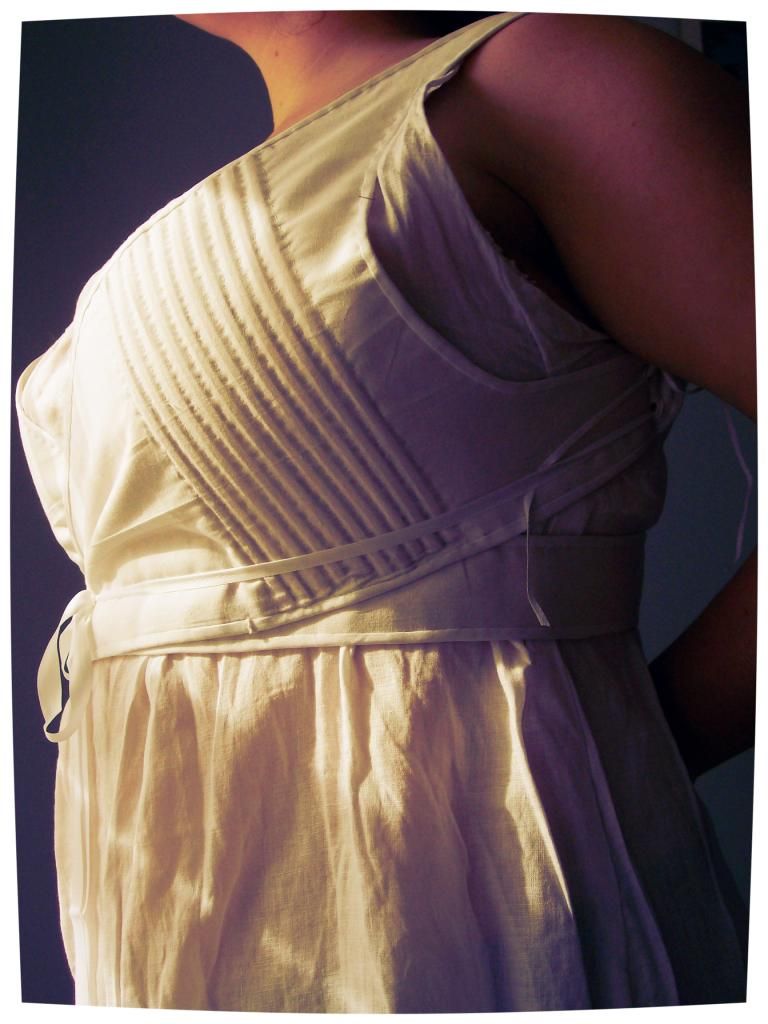

Comments
Actually, there's lots of evidence for short stays early in the transitional period between the late Georgian and early Regency. The Victoria & Albert Museum has a lovely pair that clearly shows the transition from the conical shape to the more natural bust shape and raised waistline, and there are lots of advertisements from the period for the sale of what we call "short stays". They're usually tabbed, like earlier stays, with bust cups rather than gussets. The Connecticut Historical Society and Kent University's fashion museum both have extant short stays, as well, in the style described above. There are also extant examples of the "corset elastique" which was a short stay with steel spirals under the bust, with bust cups.
These really highlight your shape wonderfully, and I'd love to see the effect under a gown!
Thank you for the compliment! Yes, they do stay in place. It took a bit of a learning curve to begin with, but eventually I figured out where they needed to be on my body to stay in place.
I think what I was trying to say about short stays, and badly doing it, was that Sabine meant that there was little evidence for the short stays we see in some of the commercial patterns, like Sense and Sensiblility(I love this pattern company, by the way), Simplicity, etc. The tabbed ones, for sure, the cupped ones, yes,(both of these are more often called "tranisitional stays,") but the gusseted ones that lace in the front (short stays,) not so much. The Ladies Strategem mentions that these sort of stays (like the Kyoto one) that open in the front might have been used for pregnant, nursing, or invalid ladies. Does that make more sense? Maybe I'm still talking nonsense! :P Anyway, thank you for the information. I'm sure Sabine will be interested to hear what you've written. Maybe she can shed more light on the subject? I'm still learning... :)
The stays look crazy comfortable. Tweaked a bit they could work for modern wear, especially in summertime when synthetics can be uncomfortable.
Really cool work!
Very best,
Natalie
So lovely to see a beautiful set of half stays...well, "half stays" that's the term I came across in literature (Lady's Stratagem), not "short stays"...and yes, Steph you're right, they're of course have been half stays, lovely transitional ones with soft cups and tabs and there has been even a pair with front lacing in the "Book of Trades" 1811, but this has tabs...my concern is that most of the stays we do see in interpretation just do not look like the ones we find in fashion plates or museums...they either lack the tabs, back lacing or the cups are wrong...and sometimes the corselets (which were worn over the actual dress) are mixed up as stays...I've been mislead, too, with a prior attempt on stays...I think it was more common to have back closure (with a fastening coming together at the front) and there's a fashion plate to proof. Half stays have been sometimes made using full stays (which always had back closing) cut in half and were most often used for morning wear or travelling or working...I wonder wether there's further written notes about stays, so far I only came across it in the Lady's Stratagem.
Sabine
Is there any back view of the extant brassier avaliable?
Have a lovely day
Nereida